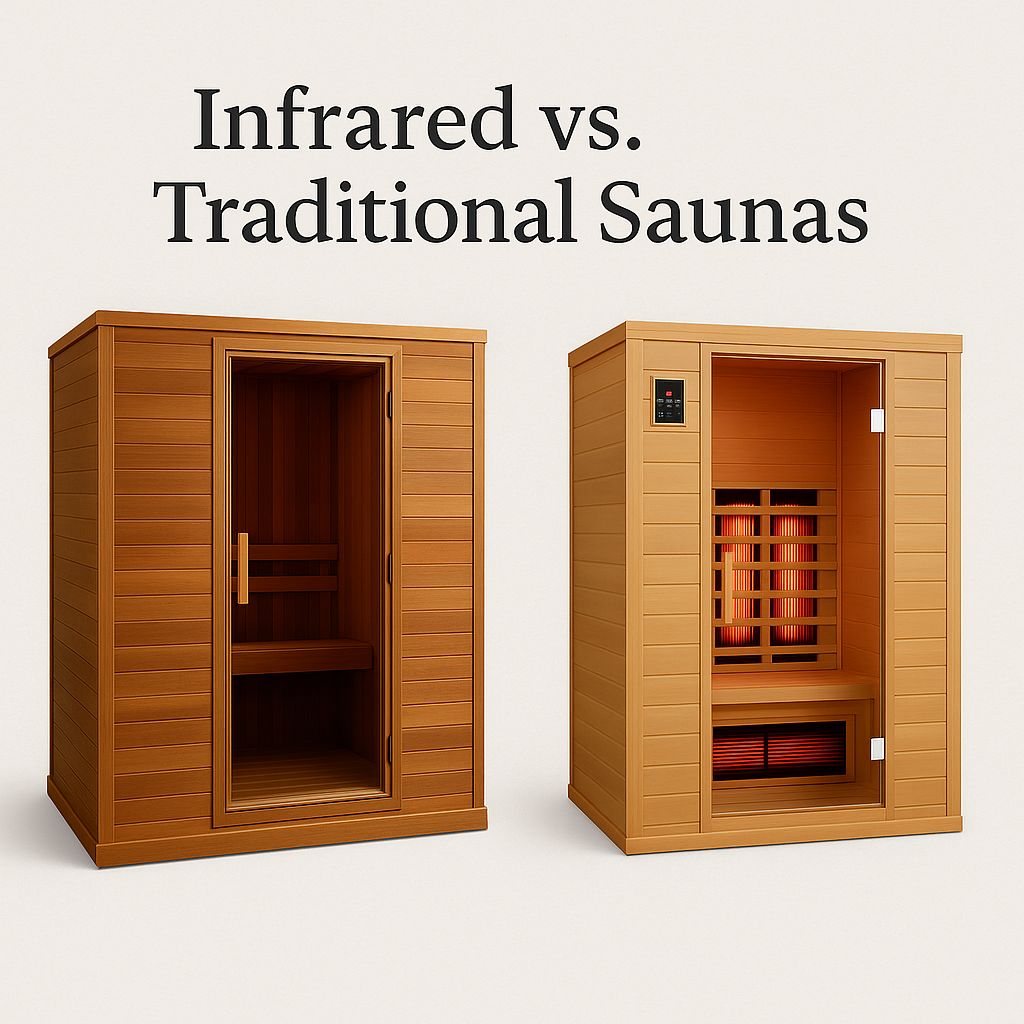
Infrared vs. Traditional Saunas: Which One is Right for You?
Share
A Sauna for Every Lifestyle
Saunas are one of the most enduring wellness traditions in the world, used for centuries to promote relaxation, recovery, and health. But not all saunas are the same. Today, homeowners often face the choice between traditional saunas (steam and stone heating) and infrared saunas (modern radiant heating).
Both have unique advantages—so which one is best for you?
How They Work
Traditional Saunas
Traditional saunas (sometimes called Finnish saunas) use a stove—either wood-fired or electric—to heat stones, which then warm the air to high temperatures (150–195°F). Pouring water over the stones produces bursts of steam, creating the humid, “sweaty” environment saunas are famous for.
Infrared Saunas
Infrared saunas heat the body directly using infrared light panels instead of heating the surrounding air. This results in a lower ambient temperature (110–140°F) while still raising core body temperature. The heat feels gentler and more gradual than traditional saunas.
Health Benefits Compared
Traditional Sauna Benefits
Cardiovascular health: Regular sauna use may improve circulation and mimic some effects of moderate exercise.
Stress relief & detox: The intense heat and sweating promote relaxation and support the body’s natural detox pathways.
Cultural connection: Used in Finland for centuries, they provide an authentic, ritual-like experience.
Infrared Sauna Benefits
Lower heat comfort: Ideal for people who find traditional sauna temps overwhelming.
Muscle recovery: Infrared therapy penetrates deeper into tissues, potentially helping with muscle soreness and joint stiffness.
Convenience: Infrared saunas typically heat faster and use less electricity.
Which One Is Right for You?
Choose a traditional sauna if you:
Love the ritual of steam and high heat
Want an authentic, time-honored sauna experience
Prefer the social aspect of multi-person sessions
Choose an infrared sauna if you:
Want a more comfortable, lower-heat option
Focus on recovery, pain relief, or long sessions
Prefer faster heat-up times and lower operating costs
Cost & Installation Considerations
Traditional saunas require ventilation, larger spaces, and sometimes professional installation (especially wood-fired models).
Infrared saunas are often plug-and-play, with smaller footprints suitable for indoor use.
Prices vary widely, but infrared saunas generally start lower, while traditional models range higher depending on size, heater type, and wood species.
Final Thoughts
There’s no single “better” sauna—it’s about matching your wellness goals and lifestyle. Some homeowners even combine both, using infrared for daily sessions and traditional saunas for deeper weekend rituals.
Looking to bring the sauna experience home? Explore our collections of Traditional Sauna and Infrared Saunas to find the perfect fit.
Sources
Harvard Health — Saunas and Your Health Sauna use linked to longer life, fewer fatal heart problems - Harvard Health
Medical News Today — Infrared Sauna Benefits Sauna: Health benefits, risks, and precautions
Mayo Clinic — Infrared sauna FAQ article Do infrared saunas have any health benefits? - Mayo Clinic
Cleveland Clinic — Infrared Sauna Health Insights Infrared Saunas: 6 Health Benefits

